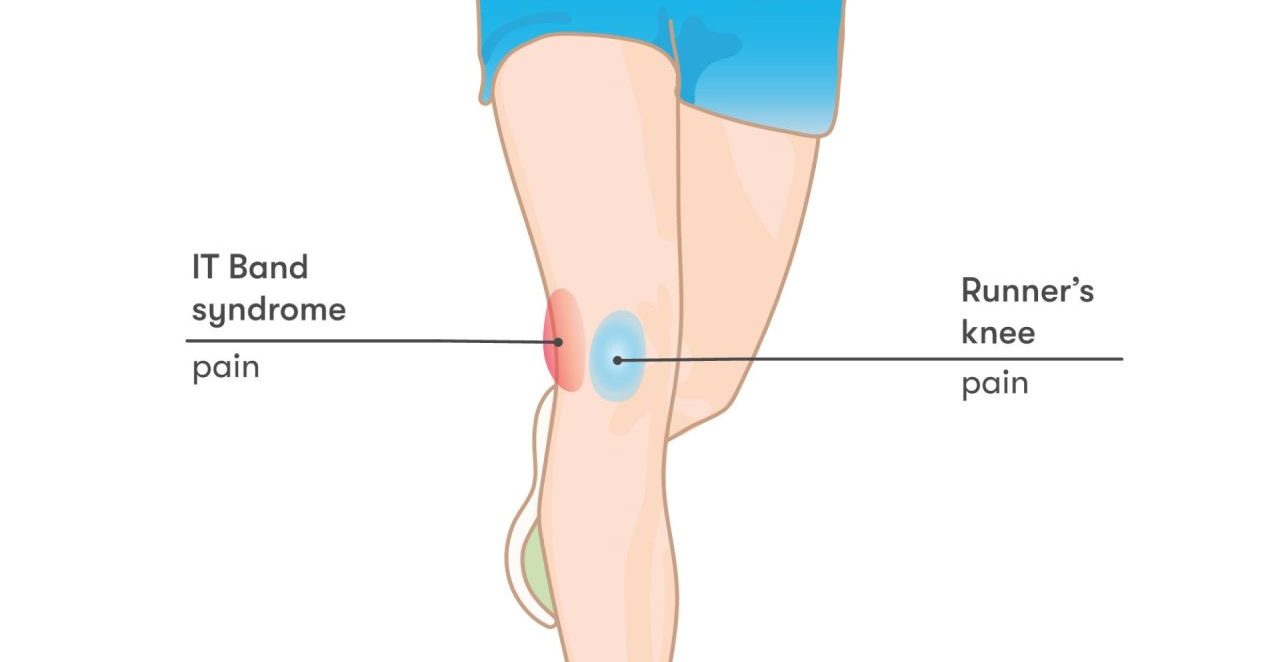ITB (Iliotibial band) Friction Syndrome is a common overuse injury that affects the outside of the knee. The iliotibial band is a thick band of fascia that runs along the outside of the thigh, from the hip to the knee. ITB Friction Syndrome occurs when the iliotibial band becomes inflamed and rubs against the lateral femoral condyle, the bony prominence on the outside of the knee joint. This can cause pain and discomfort, especially during activities such as running, cycling, or hiking downhill.
Symptoms of ITB Friction Syndrome may include a sharp pain on the outside of the knee, especially during activity, as well as tenderness and swelling in the area. Pain may also be felt higher up in the hip or lower down in the shin.
Treatment for ITB Friction Syndrome typically involves a combination of physiotherapy, rest, and modifying activities. The goal of physiotherapy is to address any underlying biomechanical issues that may be contributing to the injury, as well as to reduce pain and inflammation, improve flexibility, and strengthen the muscles around the hip and knee joint.
Applying the 5 stages of rehab to ITB Friction Syndrome for the best possible outcome:
- Pain and symptom management. The initial goal of treatment is to reduce pain and inflammation. Rest and avoiding aggravating activities, as well as using ice, compression, and elevation (RICE), can help to reduce pain and swelling. Anti-inflammatory medications such as nonsteroidal anti-inflammatory drugs (NSAIDs) may also be prescribed to manage pain and inflammation. Physiotherapy treatments such as soft tissue massage, stretching, and taping can also help to reduce pain and swelling.
- Range of motion: Once pain and inflammation are under control, the focus shifts to restoring normal range of motion in the hip, knee and ankle joints. Physiotherapy treatments such as joint mobilization, stretching exercises, and foam rolling can help to improve flexibility and reduce stiffness in the affected areas.
- Motor control: In stage 3, the focus is on improving neuromuscular control around the hip and knee joints. Exercises that target the muscles around the hip and knee joints, including the glutes, quadriceps, and hamstrings, can help to improve muscle strength, balance, and coordination. Proprioceptive training, which involves exercises that challenge balance and coordination, can also be beneficial in improving motor control.
- Strengthening: In stage 4, the goal is to build strength in the muscles around the hip and knee joints to improve stability and reduce the risk of reinjury. Resistance training, including exercises such as squats, lunges, and leg presses, can help to build muscle strength and endurance. Specific hip exercises such as clamshells, hip thrusts, and lateral band walks, can also be beneficial in addressing any underlying biomechanical issues.
- Maintenance: In the final stage of rehab, the focus is on maintaining the gains achieved in the previous stages and preventing reinjury. This may involve continuing with regular exercise, including strengthening and motor control training, as well as making any necessary modifications to daily activities or sports participation to reduce the risk of further injury. Regular physiotherapy appointments and follow-up care can also be beneficial in maintaining progress and addressing issues that may arise.
For more information regarding ITB friction syndrome please see:


